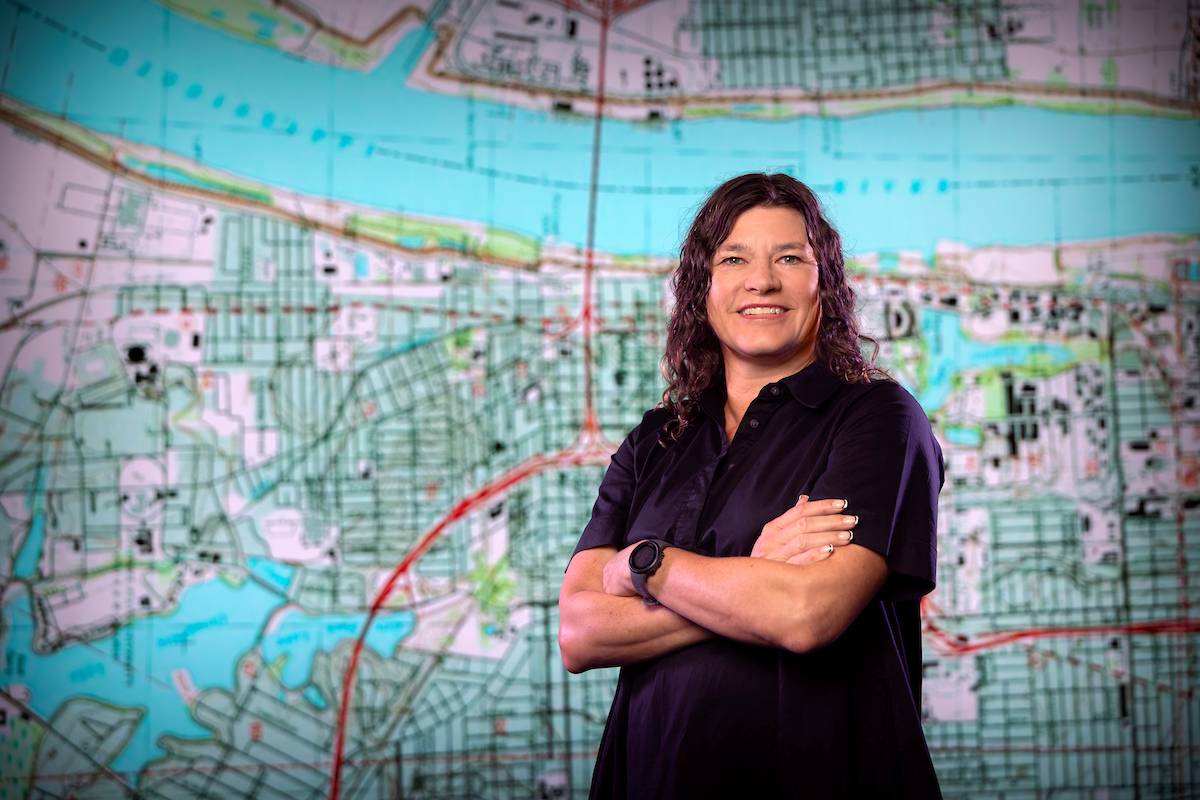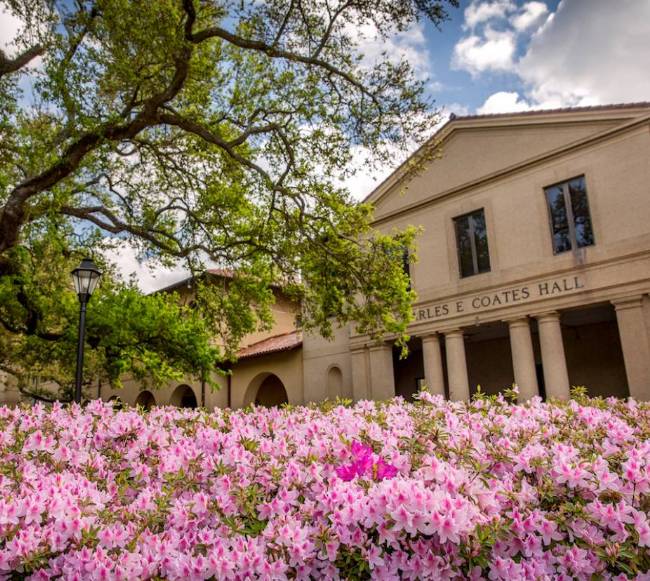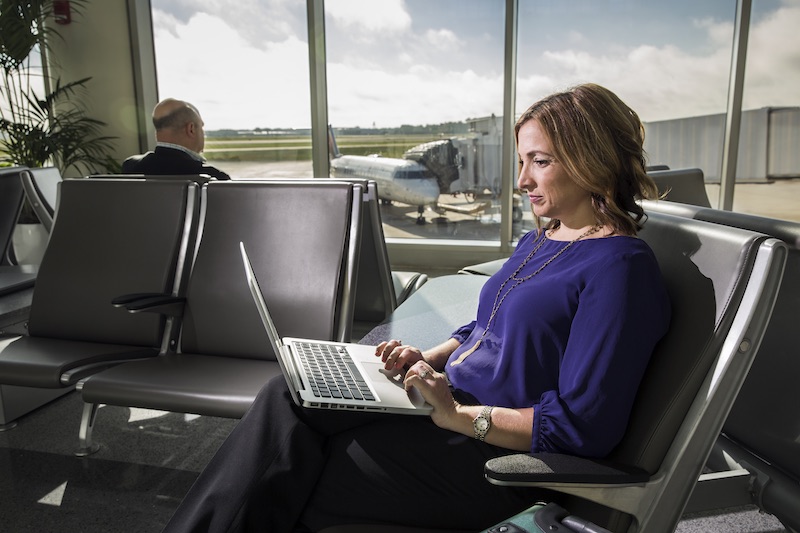Shaped by Katrina, LSU’s Traci Birch Is Now Helping Plan for a Stronger Louisiana
August 08, 2025
Traci Birch was a Ph.D. student and practicing urban planner when she was forced to evacuate from New Orleans ahead of Hurricane Katrina in 2005. She thought she’d be back home in a few days. Instead, she left Louisiana to finish her degree, then later returned to Louisiana, working in recovery planning.
Now an associate professor at the LSU School of Architecture and associate director of the LSU Coastal Ecosystem Design Studio, Birch has spent the last two decades helping Louisiana communities recover, rebuild, and prepare for the future. From working with FEMA in the months after the storm to shaping long-term resilience strategies across the state, her work reflects a deep commitment to applied, collaborative research to help communities statewide.

Traci Birch, associate professor at the LSU School of Architecture and associate director of the LSU Coastal Ecosystem Design Studio.
– Photo by Eddy Perez
In this Q&A, Birch shares her experience during Katrina, how the disaster shaped her path, and why she believes LSU’s students, research, and outreach are key to building a safer, more resilient Louisiana.
Where were you during Hurricane Katrina, and what do you remember most vividly from that time, both as a New Orleans resident and someone who would later help shape the city’s rebuilding?
In 2005, I was a Ph.D. student at the University of New Orleans working on my degree in Urban Studies and Ecosystem Management. I was also a practicing planner with a small planning firm in New Orleans called Villavaso & Associates. I evacuated to Zachary, Louisiana, with one dog and two cats. I thought I’d be gone for just a few days in Baton Rouge before going home.
We lost power even that far from the storm, so we didn’t really know what was happening until about two days later. I went into a coffee shop in Zachary that had power, and I saw the television footage. That’s when I realized how widespread the flooding was and that there was no going home anytime soon.
As an urban planner, you instantly think about the bigger community and the bigger picture. How do you recover from something like this? The enormity of it hit me when I saw the photographs of the water under the interstate near the cemeteries. That kind of flooding is uncontainable. It made me realize how enormous the catastrophe was, and how it would affect every part of the city and everyone who lived there.
How did you respond? What did you do next?
At the time, I just said, “We gotta get out of here.” I went to Ohio for about a month to figure out what to do. I was fortunate to have some connections in North Carolina and was able to register as a student at East Carolina University, so I could focus on something. I studied for my qualifying exams, used their library, talked to professors, and tried to figure out my next steps.
They were immensely helpful. I had really great mentorship at both ECU and UNC. Eventually, I took my qualifying exams remotely and changed my dissertation topic to focus on the North Carolina coast instead of Louisiana. I was fortunate to be able to make the best of that time.
By November, I had started working for FEMA. I was back in Louisiana, working in Jefferson Parish on recovery planning. I later became assistant director of the Recovery Support Function, which was focused on connecting communities with resources across South Louisiana.
What does a recovery planner do after a storm like this?
You answer phone calls and try to help people and organizations that need support. We worked with everyone, from neighborhood groups and nonprofits like the Nature Conservancy to mayors and parish presidents. We helped address recovery needs that didn’t have obvious funding sources or connections.
When all the systems are broken, you may be able to bring back roads, schools, and buildings, but what about the less tangible things? Community parks and organizations are important too, and we worked to help them recover along with everything else.
Did you feel called to do that work, especially because of your connection to the city?
Oh, absolutely. That’s probably part of why I became an urban planner, to work at the community scale to improve quality of life. And when it’s your own community, there aren’t many other options in your mind. You come back and do the work.
How do you reflect on those experiences now, almost 20 years later?
I worked for FEMA for about 18 months, then returned to the planning firm Villavaso & Associates. They were one of the primary leaders of the recovery planning process in New Orleans. We worked on the Unified New Orleans Plan, which guided recovery spending and funding. I later worked on the city’s updated master plan, which was the first one in decades, and then the zoning ordinance. That work was about implementing sustainability practices that the city needed badly.
After that, I finished my Ph.D. and went into academia. In some ways, those experiences shaped everything I do. My research is applied and focused on working with communities, residents, elected officials, and everyone. I’ve been fortunate to continue that work at LSU. My courses are applied and involve real clients. I do that as both research and teaching, and I’ve had funding partners who support that model over the past eight years I’ve been here.
You're the associate director of LSU's Coastal Ecosystem Design Studio. Can you speak about the role of the Coastal Ecosystem Design Studio and its impact on the state?
Starting in 2016, we had a large project called Inland from the Coast. It was a multi-year, multi-community project working with people on the ground in places impacted by the 2016 floods around Baton Rouge, communities that didn’t expect to flood but did. We helped them think through recovery in ways that could make them safer and more resilient.
A lot of our work is with smaller communities that don’t have many resources. In some places, the entire planning department is one person. We’re able to bring in students, energy, and time to help create a strategic path forward. It’s not the final answer, but it gives them a direction and something to build on. It’s a way for LSU to extend its resources out to communities that need support.
Has anything changed in research or impact because of Katrina?
“ LSU is the flagship university, it’s the glue holding so much of this together. My focus is on coastal issues and coastal communities, and in many ways, we lead the world in coastal research. Most of that work is grounded in Louisiana, but it’s also applicable far beyond. The work we do here can be translated to other parts of the country and world. That’s something only a university can do. ”
Yes. I think one big shift is that funders are now focused more on applied research. Programs like the National Academies’ Gulf Research Program are focused on application: how do you turn your research into action? That’s directly a result of Katrina and Rita. We do work in southwest Louisiana, and they’ve been hit repeatedly, too.
There’s also a broader focus on learning to live with water. No community is completely safe from disaster impacts anymore. And since Katrina, we’ve seen other major storms like Harvey and Michael, there’s a pattern, and we have to plan for that.
Have you seen changes in how different fields work together post-Katrina?
Definitely, there’s been a big shift toward multidisciplinary research. We’re asking: How do we bring together people from across the university and the region? Everyone, from community groups to engineers, architects, and social scientists. Our studio is designed to be that kind of collaborative space.
Right now, we’re working on two major grant projects, ACTIONS and DEEDS. ACTIONS is primarily about modeling, risk, hydrology, and storm surge. DEEDS is about turning that science into practice. We bring in students and interns from across the country and the world to work together, speak a common language, and identify nature-based solutions that reduce risk and improve quality of life.
What would be lost if LSU and the Design Studio didn’t exist?
LSU is the flagship university, it’s the glue holding so much of this together. My focus is on coastal issues and coastal communities, and in many ways, we lead the world in coastal research. Most of that work is grounded in Louisiana, but it’s also applicable far beyond. The work we do here can be translated to other parts of the country and world. That’s something only a university can do.
Does all of this give you hope for the future?
Absolutely. I look at the projects I’m involved in, projects that are asking big, hard questions. Funders are supporting this work, and it’s all tied to student development. These students are the next generation of professionals. They understand the complexity of the issues and how to work across disciplines and communities. They know that local people are often the knowledge holders. That gives me hope, that this next generation sees complex problems and knows they need teamwork to solve them.
Explore LSU’s role in response, recovery, resilience, and research following Hurricane
Katrina.Turning Tragedy into Impact


